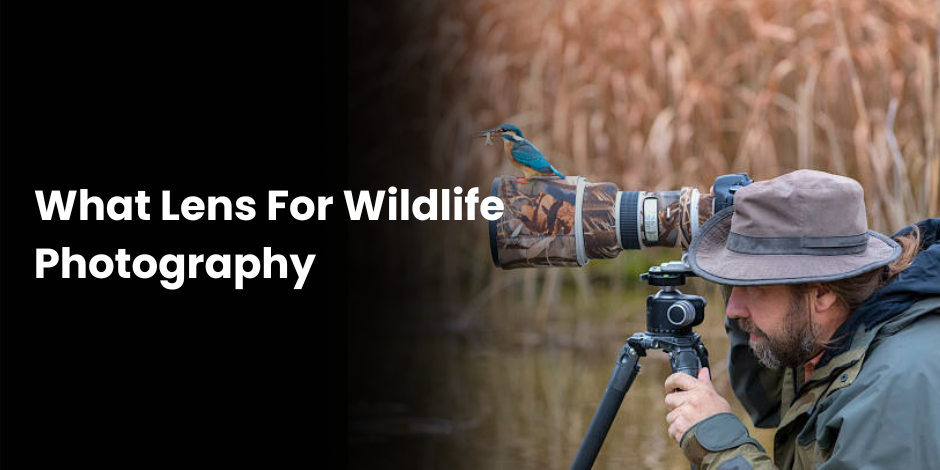Discover Studios, Services & More Across USA | StudioBDTLA
What Lens For Wildlife Photography

Wildlife photography can be one of the most rewarding and challenging genres of photography. The thrill of capturing the raw beauty of wildlife in their natural habitat is unmatched. However, the key to success in this endeavor lies not just in your skills but also in the equipment you use, particularly the lenses. This comprehensive guide will help photographers of all levels make informed decisions about selecting the right lens for wildlife photography. Whether you’re a seasoned pro or just starting, you’ll find valuable insights here.
Why Choosing the Right Lens Matters
The lens you choose will significantly impact the quality of your wildlife photography. A good lens will help you capture sharp, detailed images of animals, even from a distance. Wildlife is often unpredictable, and you might not get a second chance to capture that perfect shot. Therefore, having the right lens is crucial for making the most of these fleeting moments.
Understanding Focal Length
Focal length is one of the most critical aspects to consider when choosing a lens for wildlife photography. It determines how much of a scene you can capture and how close you can get to your subject without physically moving.
Short Focal Lengths
Lenses with short focal lengths (e.g., 24mm to 70mm) are typically not ideal for wildlife photography. These lenses are better suited for landscapes or portraits. While they offer a wide field of view, they won’t allow you to get close enough to animals without disturbing them.
Medium Focal Lengths
Lenses in the range of 70mm to 200mm can be useful for wildlife photography, especially if you are photographing larger animals or working in environments where you can get relatively close to your subjects. These lenses offer a good balance between capturing detail and maintaining a reasonable distance.
Long Focal Lengths
For most wildlife photographers, lenses with long focal lengths (e.g., 300mm to 600mm) are the gold standard. These lenses allow you to capture detailed images of animals from a safe distance, minimizing the risk of disturbing them. They are particularly useful for photographing smaller animals or birds.
The Importance of Aperture
Aperture refers to the opening in a lens through which light passes to enter the camera. It is measured in f-stops. A lens with a wide aperture (e.g., f/2.8) allows more light to hit the camera sensor, which is beneficial for shooting in low-light conditions.
Wide Apertures
Lenses with wide apertures (e.g., f/2.8) are ideal for wildlife photography. They allow you to use faster shutter speeds, which helps in freezing motion and capturing sharp images. A wide aperture also provides a shallow depth of field, making your subject stand out against a blurred background.
Narrow Apertures
While lenses with narrow apertures (e.g., f/5.6 or f/8) are generally less expensive, they may not perform as well in low-light conditions. However, they can still be useful in well-lit environments and offer greater depth of field, which can be beneficial for capturing landscapes along with wildlife.
Types of Lenses Suitable for Wildlife Photography
There are various types of lenses available, each with its own set of advantages and disadvantages. Understanding these can help you make an informed decision.
Prime Lenses
Prime lenses have a fixed focal length. They are known for their sharpness and image quality. Because they have fewer moving parts, prime lenses are generally more durable and reliable.
Pros
- Superior Image Quality: Prime lenses often produce sharper images.
- Lighter Weight: They are generally lighter than zoom lenses.
- Wider Apertures: Many prime lenses offer wider apertures, making them ideal for low-light conditions.
Cons
- Fixed Focal Length: You can’t zoom in or out, which means you’ll need to move physically to frame your shot.
Zoom Lenses
Zoom lenses offer a range of focal lengths in a single lens. They are versatile and convenient, making them a popular choice for many wildlife photographers.
Pros
- Versatility: One lens can cover multiple focal lengths.
- Convenience: Easier to carry one zoom lens than multiple prime lenses.
Cons
- Heavier: Generally heavier than prime lenses.
- Variable Aperture: Some zoom lenses have variable apertures, which can be limiting in low-light conditions.
Image Stabilization
Wildlife photography often involves shooting in challenging conditions where stability is crucial. Image stabilization is a feature that helps reduce the blur caused by camera shake.
Optical Image Stabilization (OIS)
OIS is built into the lens and adjusts the lens elements to counteract camera shake. This feature is particularly useful for handheld shooting.
In-Camera Stabilization
Some cameras offer in-body image stabilization. While this can be helpful, combining it with a lens that also has stabilization can provide even better results.
Weather Sealing
Wildlife photography often takes you into harsh environments. Weather-sealed lenses are designed to withstand moisture, dust, and extreme temperatures, making them ideal for outdoor use.
Importance of Weather Sealing
Investing in weather-sealed lenses can prolong the lifespan of your equipment and ensure that you can shoot in various conditions without worrying about damaging your gear.
Autofocus Speed and Accuracy
Capturing wildlife often requires quick reflexes and fast autofocus. Lenses with high-speed, accurate autofocus systems can make a significant difference in your ability to capture fleeting moments.
Fast Autofocus
Lenses with fast autofocus are essential for capturing moving subjects. Look for lenses that offer ultrasonic motors (USM) or stepping motors (STM) for quick and quiet focusing.
Tracking Abilities
Some lenses offer advanced tracking capabilities, which can be useful for following fast-moving animals. This feature is particularly beneficial for bird photography.
Weight and Portability
Wildlife photography often involves long hours in the field, sometimes in remote locations. The weight and portability of your lens can significantly impact your experience.
Lightweight Lenses
Lighter lenses are easier to carry and handle, especially during extended shooting sessions. They can reduce fatigue and make it easier to react quickly to changing situations.
Heavy Lenses
While heavier lenses often offer better build quality and more advanced features, they can be cumbersome to carry. Consider using a tripod or monopod to alleviate some of the weight.
Cost Considerations
Lenses can range from a few hundred to several thousand dollars. It’s essential to consider your budget when choosing a lens, but remember that investing in quality equipment can pay off in the long run.
Budget Lenses
If you’re on a tight budget, there are still plenty of good options available. Look for lenses with slightly narrower apertures or consider buying used equipment.
High-End Lenses
If budget is not a concern, high-end lenses offer superior image quality, build, and features. These lenses are often weather-sealed and come with advanced autofocus systems.
Popular Lens Choices for Wildlife Photography
Here are some popular lenses that many wildlife photographers swear by:
Canon EF 100-400mm f/4.5-5.6L IS II USM
This versatile zoom lens offers excellent image quality and a good range of focal lengths. It also features image stabilization, making it a solid choice for wildlife photography.
Nikon AF-S NIKKOR 200-500mm f/5.6E ED VR
Known for its exceptional reach, this lens is excellent for capturing distant subjects. It also features vibration reduction, which helps reduce camera shake.
Sony FE 200-600mm f/5.6-6.3 G OSS
This lens offers an impressive focal length range and optical image stabilization, making it a great option for Sony users looking to capture stunning wildlife photos.
Maintaining Your Lenses
Proper maintenance of your lenses is crucial for ensuring their longevity and performance. Regular cleaning and proper storage can go a long way in keeping your equipment in top condition.
Cleaning Tips
Use a microfiber cloth and lens cleaning solution to keep your lenses free of dust and smudges. Avoid using rough materials that could scratch the glass.
Storage Tips
Store your lenses in a dry, cool place when not in use. Consider using a padded bag or case to protect them from physical damage.
Conclusion
Choosing the right lens for wildlife photography can significantly enhance your ability to capture stunning images of animals in their natural habitat. By understanding the importance of focal length, aperture, image stabilization, and other key features, you can make an informed decision that suits your needs and budget. Remember, the best lens is one that aligns with your shooting style and helps you achieve your photographic goals.
Ready to take your wildlife photography to the next level? Explore our selection of recommended lenses and start capturing the beauty of the wild today!
Frequently Asked Questions
What is the best focal length for wildlife photography?
Long focal lengths, typically between 300mm and 600mm, are ideal for capturing detailed images of wildlife from a distance.
Do I need a lens with image stabilization for wildlife photography?
While not mandatory, image stabilization can significantly reduce blur caused by camera shake, especially when shooting handheld.
Is a prime lens better than a zoom lens for wildlife photography?
Both have their advantages. Prime lenses offer superior image quality and wider apertures, while zoom lenses provide versatility and convenience.
How important is weather sealing in a lens for wildlife photography?
Weather sealing is crucial if you plan to shoot in various outdoor conditions. It protects your lens from moisture, dust, and extreme temperatures.
What should I consider when choosing a lens for bird photography?
For bird photography, look for lenses with fast and accurate autofocus, long focal lengths, and good tracking capabilities.
—
By following the tips and guidelines outlined in this blog post, you can make an informed decision when selecting a lens for wildlife photography. Happy shooting!

